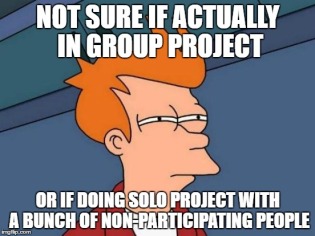
Qualifications Evaluation Panel (QEP)
Greetings from the madhouse!
When I left you last, I was in the midst of writing my Personal Narratives. I submitted those in the wee hours of the South Korean Morning, complete at last. They were by far the best essays I could have written and that was in no small part due to all the amazing people who helped me edit and review each and every word. For those of you reading who might be just beginning the QEP process, I cannot stress it enough: Get others to read and review your work!
I used the S.T.A.R. (Situation Task Action Result) technique and a great mix of reviewers from all over the world (literally!). My Mother has always been my go-to Patron Saint of Writing Block and my Father the Editor in Chief. My Husband took several passes at my essays with his critical English Teacher’s eye (and red pen).
In addition to my immediate family, I called on folks from all walks of life; from one of my best friends (who is going to be teaching in Japan soon!!) to my cousin in the Armed Forces. I also had several strangers review my essays and that, I think, is the secret key to success. My friends and family knew me and my stories quite well, but the true test was passing these essays by strangers who had no idea who I was or what these stories were about. If they could understand them and get a good picture of “me,” then so could the BEX assessors I so desperately want to please.
THANK YOU to everyone who took the time to look over those essays – you make me better! On March 16 at 11:53 PM I hit “Submit” on my personal narratives and a nice little note from Pearson VUE read:
The Department of State Qualifications Evaluation Panel (QEP) is currently reviewing your Application, FSOT results, and Personal Narrative responses. QEP results are usually announced seven to eight weeks after the Personal Narrative submission due date.
It’s now the beginning of week six and I expect to hear back on May 4th or 5th. I wish I could tell you that I took a nice little vacation these last six weeks, but that would be a lie. I have been working my butt off studying for the next step in this process the Oral Assessment.
Foreign Service Oral Assessment (FSOA)

So the next step to become a foreign service officer after passing my personal narratives is to take the Oral Assessment. Now, I won’t know if I pass the PNs for another two weeks, but the February cohort has the opportunity to test in San Francisco in May 2017. I am going back to the States to visit family in May already, so I’m hoping to pass my narratives and schedule my test during that window. It would save a lot of money and jet lag to not have to fly all the way to Washington D.C. from Korea in the other testing window (sometime from June to October, 2017). However, taking the test in May means that I won’t have a lot of time from finding out I pass to taking the actual test, hence the advance studying. Hopefully I pass or else I’ll have to start over from scratch and wait until next year to use this information! Regardless, here’s a quick guide to how I’ve been approaching the FSOA.
Study Strategies
The FSOA is broken up into three main parts, the Group Exercise (GE), the Structured Interview (SI) and the Case Management (CM) sections. BY FAR the best resource I can direct you to is the FSOA Yahoo Group. There are dozens of resources there, not to mention the invaluable virtual study groups. I have attended or created over a dozen Skype group sessions to work together on mock interviews, group exercises, and even editing of case management memos. Go sign up today! It’s a public group for those ready to seriously study. Be sure to check out all of Traveler’s notes (search that name in the file
s section) – they are some of the most comprehensive reviews of the FSOA process.
Group Exercise
During the GE you’ll be in a room with 4-6 other test takers and be given a package of information about a fake country and a fake aid project the “embassy” is being asked to consider for funding. You have 30 minutes to prepare a 6 minute presentation to your peers and then will discuss the various proposals for 20-25 minutes (depending on group size). After all of that, you’ll debrief the session with the “ambassador” (who is really one of your assessors). Let me be perfectly clear on a point a lot of people miss: GETTING FUNDING FOR YOUR PROJECT DOES NOT MATTER. Not one bit. The whole point of this exercise is to come to a consensus. If you get funding (or partial funding) for your project, great! If not, no big deal. In order to pass, you have to show the assessors that you can:
- Give a good presentation
- Participate fully and productively in the discussion phase
- Demonstrate the dimensions they’re looking for: Composure, Information Integration and Analysis, Initiative and Leadership, Judgement, Objectivity and Integrity, Oral Communication, Planning and Organizing, and Working with Others.\
Let’s break down some strategies for this section that anyone can use to be successful. Keep in mind, this is coming from someone who has not yet taken the FSOA, let alone passed. But I can tell you that I’ve read just about every document on the Yahoo Groups and this is what seems to work best for me in practice groups.
The Presentation:
- Glance at the country background information so you know what information is available to you, but don’t spend any time reading! Skip directly to your assigned project.
- Immediately look for the funding costs for your project. Some cases give you background information that may/may not be useful. Looking for the numbers first ensures that you’ll skip right to the relevant information.
- Typically you’ll have some supporting documents that are either for or against your project. Read these!! They may provide critical information that could give you the sink or swim on your project.
- Organize all of your information under these five headers (don’t forget to put the project name at the top of your notes page)
- Project Goals – a 1-2 sentence summary of your project.
- Cost – What the US Embassy is responsible for first (include any breakdown of materials/cost), followed by any partners, followed by the total cost of the project.
- Positives – Things that make your project great (include country background info here if appropriate), name the supporters of your project if listed. Do not advocate.
- Negatives – Things that concern you about your project (include country background info here if appropriate), name the people who believe your project will fail, and why. Do not leave out important details, but do not “tank” your project in the presentation phase.
- U.S. Interests – These are listed at the beginning of your project packet. Describe which ones are most relevant to your project. Feel free to identify interests your project supports “indirectly.” Explain why your project supports these interests, but do not advocate for your project. If available, list the number for each U.S. Interest so note-takers can write them down quickly. End your presentation on this positive note.
- You will have 6 minutes for the actual presentation and you can use your notes. Try not to depend on them or read from them directly, but rather engage with your audience. If possible, leave 1 minute at the end of your presentation for questions.
- When it is not your turn to present, take notes using the same categories above (so you can easily cross-reference different parts of the projects) and think of useful questions you might ask. If the presenter has left out important information, or gone too quickly over critical information (like cost), please ask them to include it in a follow-up question.
 DO NOT speak to funding in a follow-up question. Bringing up full or partial funding (unless it was already discussed in the presentation, IE: this project cannot move forward without full funding) backs the presenter into a corner for the discussion phase.
DO NOT speak to funding in a follow-up question. Bringing up full or partial funding (unless it was already discussed in the presentation, IE: this project cannot move forward without full funding) backs the presenter into a corner for the discussion phase.
The Discussion Phase
First of all, let me say that there is a LOT of information out there on best practices for the Discussion Phase of the Group Exercise. The best piece of advice I could give to anyone is to join the Yahoo FSOA group and participate in a virtual (or local) practice GE. Doing it for real with real people who have real personalities, real weirdness, and real agendas is what counts here. It will prepare you better than any of the other strategies I could possibly suggest. That being said, here are a few strategies:
- If you feel comfortable with a watch, offer to keep time for the group.
- Even if you don’t feel comfortable with keeping time, suggest that at “5 minutes remaining” (or whatever time makes sense for your group) “we begin to talk numbers.” This sets you up to have a concrete time to change the conversation if you have yet to eliminate any projects.
- Someone will need to agree to write the “memo” to the Ambassador. This should be a short wrap-up of which projects get funding and how much for each. It’s a good idea for everyone to write down this info in their notes. Although you won’t be able to use notes in the Ambassador debrief, it might help jog your memory.
- Don’t give up on your project right away! Even if you intend to dump your loser project some time in the process, give good justification for WHY you are abdicating and take time to advocate for the positives of your project first. Best case scenario is that you allow the conversation to circle back to your project at least once before dropping your support.
- If you feel this will help your group, suggest that you all agree on a set of standards that you’ll be using to determine which projects merit funding. For example: Number of U.S. Interests supported, Cost benefit analysis, etc.
- If there isn’t any obvious consensus forming, try suggesting that each person advocate for their own project AND one other project.
- Don’t be afraid to move toward consensus – even if that is at the expense of your own project. Again, don’t let go of your project without justification, but don’t hold back the group just to get funding. Getting funding for your project (full or partial) does NOT guarantee that you will pass this exercise.
- If someone isn’t talking much, throw them a bone. Ask them to clarify something about their project, ask their opinion, or ask them to speak to where they think consensus is heading. Be a facilitator, not a dominant speaker.
In the end, this is a timed exercise. The decisions you make in this time, even the strategies you use to come to those decisions would almost certainly be different in a 2 or 3 hour exercise where everyone has time to “speak their piece.” Try to avoid aggression, sarcasm, or dominating the conversation. Be a facilitator, be kind, be reasonable and logical. Above all, remember the goal of this process is to meet the funding goal and come to a consensus. All of the projects will have good parts and bad parts. Pick the ones that work for your group and think hard about how you will defend them to the Ambassador.
P.S. At no point in this process should you bring in outside information! Even if you are an expert in hydro electric dams and this hydro electric dam project will never, ever work, you should keep your lips sealed. If it’s not in the packet, it’s not in your presentation or discussion. End of story.
The Ambassador Debrief
Having not yet taken this test myself, there is still a lot of ambiguity surrounding this phase. The “Ambassador” is one of the previous test assessors who was watching your discussion and will be in the room with you and one other assessor. You will be asked questions about the discussion you just had and the consensus you came to. Due to NDA compliance, the study groups aren’t clear what types of questions you will be asked. However, we have learned that you might be asked about specific members of your group by name, so it’s a REALLY good idea to learn all of their names.
To practice for this session, try to give a brief overview of all of the projects you considered, which ones you selected for funding, why you funded those projects, why you didn’t fund others, and the funding levels for each project (or part of project). This should take about 2-3 minutes max. Knowing all of this info should prepare you for any questions the “Ambassador” might ask.
GE Recap
The GE section is stressful because it’s the one section that a bad egg could tank the whole exercise. For the love of all things Foreign Service, don’t be that guy. Keep your head above the mess of projects you’re reviewing and remember that this entire thing is a test. It’s a game, so game it. To wrap up this section, let’s review a few study tips:
- Practice real life GE’s with the FSOA Virtual Study
 Groups
Groups - Create a structure for your notes and stick to it for your own presentation and that of others
- Establish concrete times, standards, and goals in your discussion group
- Advocate as necessary for your project, but remember that funding doesn’t matter in the end; consensus does
- Know why you funded the projects you picked, why you didn’t fund the others, and how much funding you’re recommending for the “Ambassador” brief
- Don’t be that guy.
Keep an eye out for Parts 2 and 3 of the FSOA Study Strategies!
‘Till next time.
There is a lot of great information in here. Thank you!
LikeLike
This information is very helpful. Really appreciate it!
LikeLike